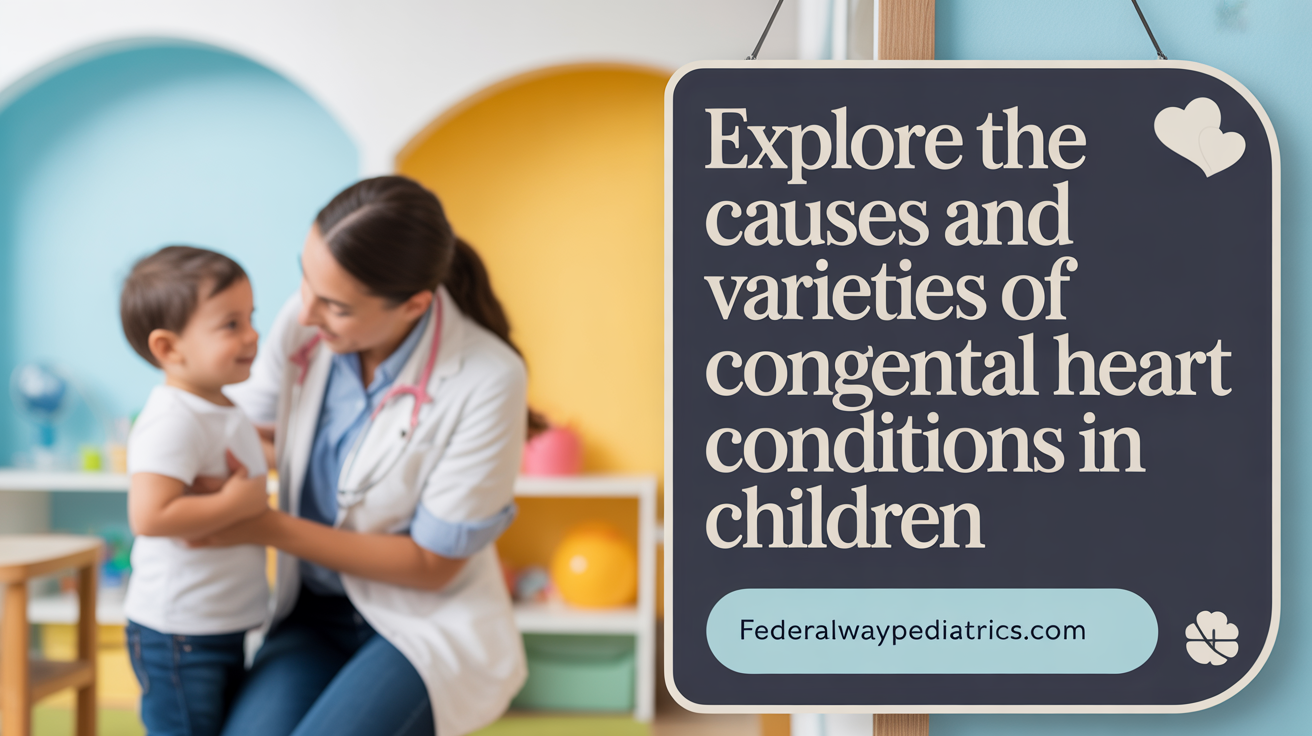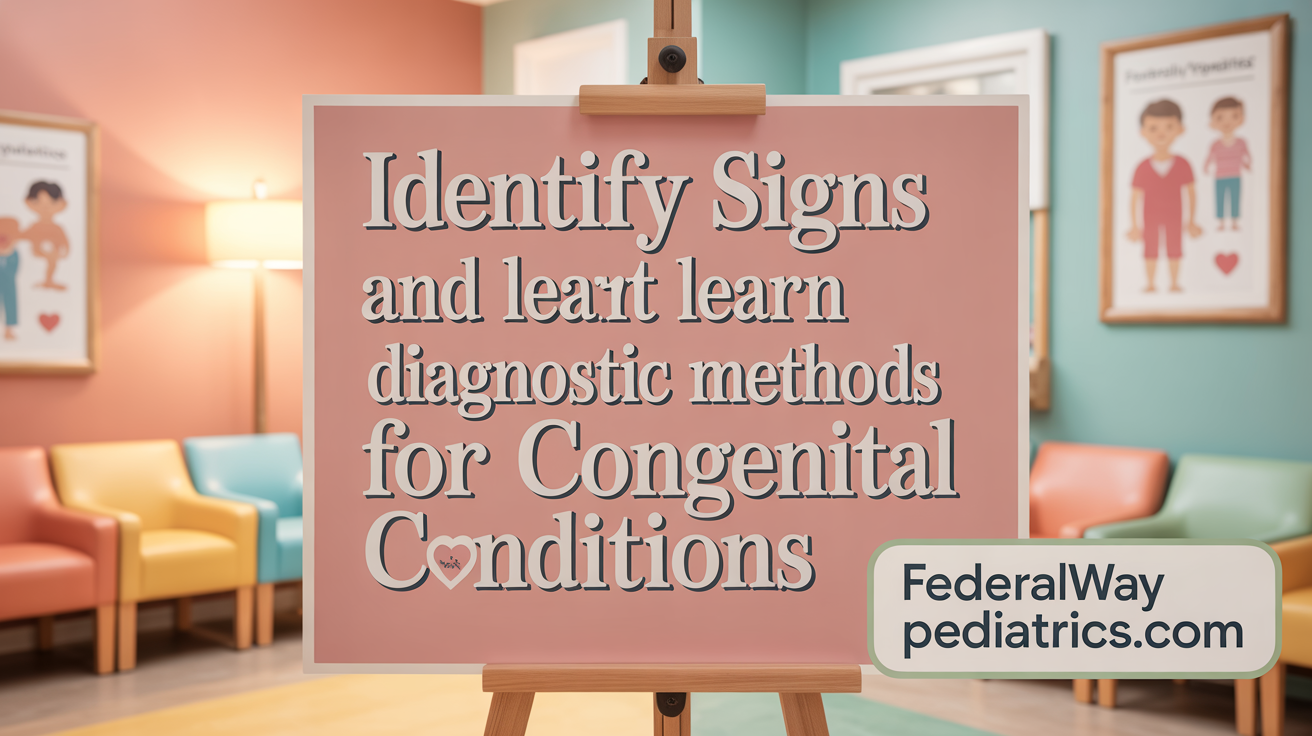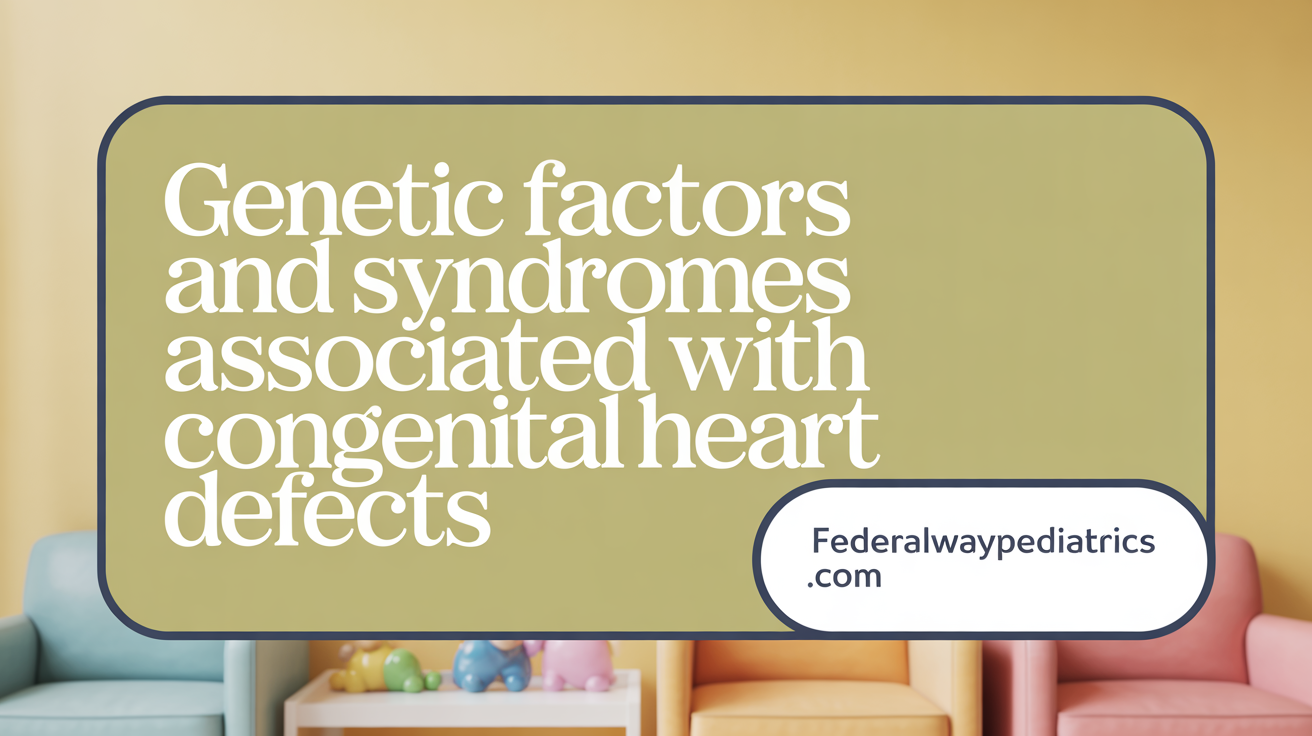Understanding Congenital Heart Defects in Childhood
Congenital heart defects (CHDs) represent a significant group of structural cardiac abnormalities present at birth, impacting thousands of children globally each year. These defects vary widely in form and severity, from minor wall holes to complex malformations, often requiring lifelong medical care and interventions. Advances in genetics, diagnostics, and treatment have improved survival rates, yet many children face challenges related to neurodevelopment, quality of life, and long-term health. This article explores the causes, clinical presentation, diagnostic approaches, treatment options, genetic underpinnings, neurodevelopmental impact, recent research, and care strategies for children with CHDs, offering insights for families and healthcare professionals alike.
Causes and Types of Congenital Heart Defects in Children

What are congenital heart defects in children, including their causes and types?
Congenital heart defects (CHDs) are structural problems of the heart that are present at birth. They result from abnormal development of the heart or blood vessels during fetal growth, predominantly within the first six weeks of pregnancy. These defects can affect the heart's walls, valves, arteries, or veins, leading to altered blood flow and heart function.
The causes of CHDs are multifactorial, often involving both genetic and environmental factors.Genetic causes can include mutations, chromosomal abnormalities such as trisomy 21 (Down syndrome), and inherited genetic conditions. Environmental influences during pregnancy, like maternal diabetes, infections (such as rubella), exposure to certain medications, smoking, alcohol, or chemical solvents, also increase the risk.
There are many types of congenital heart defects, classified broadly based on their structure and location. Common types include:
- Septal defects (holes in the atrial or ventricular septum)
- Valve abnormalities
- Coarctation of the aorta
- Tetralogy of Fallot
- Transposition of the great arteries
- Hypoplastic left heart syndrome
The severity of these defects varies significantly. Some are mild, causing no symptoms or just minor issues, while others are severe, leading to life-threatening conditions early in life.
Diagnosis often involves prenatal ultrasounds, which can detect some heart anomalies before birth. After birth, tests like echocardiography, chest X-ray, ECG, or MRI are used to confirm the diagnosis.
Treatment depends on the specific defect and its severity, ranging from medications and catheter-based interventions to open-heart surgery or even transplants. Lifelong follow-up care is common, especially for children with complex defects, to manage potential complications and support normal development.
Recognizing Symptoms and Diagnosing Congenital Heart Defects

What are the common symptoms and clinical features of congenital heart defects in children?
Children with congenital heart defects often present with a variety of symptoms depending on the severity and specific type of defect. Common signs include rapid or irregular heartbeats, cyanosis—which is a bluish discoloration of the skin, lips, or nails caused by low oxygen levels—and difficulty feeding, often leading to poor weight gain in infants.
Excessive fatigue during activities, shortness of breath, and swelling in the legs, abdomen, or around the eyes are also typical. Murmurs—abnormal heart sounds detected through listening to the chest—are frequently observed during physical examinations. Newborns may show signs such as irritability, abnormal skin pallor, or poor responsiveness, while older children might experience easy tiring, fainting episodes, or persistent swelling.
The clinical features often include abnormal skin coloration, temperature disparities, and weak or pounding pulses, indicating impaired blood flow and circulation issues. Since symptoms can range widely, some children may remain asymptomatic until later in childhood, making routine screening and careful clinical assessment essential.
How are congenital heart defects diagnosed in children?
Diagnosis of congenital heart defects relies on a combination of physical examination and various imaging tools. During a physical exam, healthcare providers listen for heart murmurs using a stethoscope and look for signs such as cyanosis or delayed growth. If a defect is suspected, further testing includes echocardiography, which uses ultrasound waves to visualize the heart's structure and blood flow.
Echocardiography, including specialized forms like fetal echocardiography, is the most common non-invasive method for detecting structural abnormalities. Electrocardiograms (ECG) are also used to assess electrical activity and identify arrhythmias. Chest X-rays provide insights into heart size and lung circulation, while pulse oximetry measures the oxygen saturation of blood.
For more detailed evaluation, particularly before surgical intervention, cardiac catheterization may be performed. This invasive procedure allows direct visualization and measurement of blood flow and pressures within the heart. Magnetic resonance imaging (MRI) provides high-resolution images of cardiac anatomy, useful for complex cases.
In some instances, fetal echocardiography during prenatal ultrasounds allows early detection of congenital heart defects, especially in pregnancies with risk factors or family history. Early diagnosis is vital for planning timely interventions and improving health outcomes.
Treatment Modalities and Management of Congenital Heart Defects

What treatment options and management strategies are available for children with congenital heart defects?
Children with congenital heart defects (CHD) require individualized treatment plans tailored to the specific type and severity of their condition. In many cases, initial management includes medications that help control symptoms and optimize heart function. For example, oxygen therapy may be used to improve oxygenation in cyanotic defects, while prostaglandin E1 can maintain ductal patency in critical heart defects before surgery.
Minimally invasive procedures, such as cardiac catheterization, often serve as both diagnostic and therapeutic tools. These procedures can repair small defects, such as closing holes in the heart, reducing the need for open-heart surgeries.
For more complex or severe cases, surgical intervention is typically necessary. Common surgeries include repairing septal defects, valve repairs or replacements, and reconstructing or rerouting blood flow pathways. Palliative surgeries are also performed to improve the child's oxygen levels and circulation until definitive repair can be achieved.
In cases where other treatments are ineffective or the defect is too severe, a heart transplant might be considered. This option is often reserved for children with end-stage heart failure or unrepairable defects.
Long-term management involves consistent follow-up care with pediatric cardiologists. This includes regular imaging, such as echocardiograms, and monitoring for potential complications like arrhythmias, valve issues, or heart failure. Supportive therapies, including physical activity guidance and infection prevention, are essential components of ongoing care.
Overall, a multidisciplinary team approach ensures that children with CHD receive comprehensive treatment and ongoing support to improve their health outcomes and quality of life.
Neurodevelopmental Impact and Brain Health in Children with CHD
 Children with congenital heart disease (CHD) are at considerable risk for neurodevelopmental challenges stemming from their heart condition. Because the fetal brain requires adequate oxygen and blood flow, abnormalities in the heart can impair brain growth and maturation early in life. As a result, children often exhibit delays in motor skills, language, cognition, and social development.
Children with congenital heart disease (CHD) are at considerable risk for neurodevelopmental challenges stemming from their heart condition. Because the fetal brain requires adequate oxygen and blood flow, abnormalities in the heart can impair brain growth and maturation early in life. As a result, children often exhibit delays in motor skills, language, cognition, and social development.
Brain injuries are common in this population and can include white matter injury, which affects neural connectivity, and other structural damages like reduced brain volume. These injuries are often linked to surgical procedures, circulatory changes during treatment, and episodes of brain ischemia or stroke.
The severity of the heart defect influences the extent of neurological impact. Children with more complex or cyanotic CHDs frequently display lower IQ scores and more pronounced cognitive deficits, especially in language and memory. In addition, they are more vulnerable to seizures and motor impairments that can hinder their learning and daily functioning.
Emerging research emphasizes the importance of early neurodevelopmental follow-up and interventions. Regular screening allows for early detection of delays, enabling tailored therapies to improve outcomes. Strategies include physical, speech, and occupational therapies, which can help mitigate long-term disabilities.
Understanding these risks underscores the importance of comprehensive care that integrates both cardiac and neurological health. The goal is to optimize each child's developmental trajectory, improve quality of life, and support their transition into independent adulthood.
| Aspect | Impact | Additional Notes |
|---|---|---|
| Neurodevelopmental impairments | Delays in muscle tone, language, social skills | Often linked to reduced fetal brain oxygenation |
| Brain injuries | White matter injury, structural abnormalities | Related to surgeries, circulatory issues, and hypoxia |
| Cognitive outcomes | Lower IQ, language, and memory deficits | Range from 1.3 to 7.6 IQ points lower, especially in cyanotic cases |
| Long-term risks | Learning difficulties, seizure risk | Can affect independence and quality of life |
| Monitoring needs | Systematic neurodevelopmental assessments | Early intervention is critical for better outcomes |
More research continues to elucidate the mechanisms behind brain injuries in CHD and to develop protective strategies. A multidisciplinary approach involving cardiologists, neurologists, and therapists is essential to address these complex developmental challenges.
Genetic Foundations and Syndromic Associations of Congenital Heart Defects

What genetic mechanisms underlie congenital heart defects, and how are they associated with syndromes like Down syndrome?
Congenital heart defects (CHD) arise from disruptions in normal heart development during fetal growth, and genetic factors play a crucial role in these abnormalities. These genetic influences include chromosomal abnormalities, gene mutations, and structural variations.
One of the most well-known genetic causes is trisomy 21, or Down syndrome, where an extra copy of chromosome 21 leads to an increased risk of congenital heart defects, particularly atrioventricular septal defects. This is due to gene dosage effects, which disturb the normal regulation of genes involved in heart formation.
Beyond trisomy 21, other chromosomal anomalies such as the 22q11.2 deletion syndrome (DiGeorge syndrome) are linked to specific cardiac malformations, including conotruncal defects. These large-scale deletions or duplications alter critical gene regions involved in cardiac embryogenesis.
Genetic mutations in developmental pathways contribute significantly to both syndromic and isolated forms of CHD. Key genes involved include NKX2-5, GATA4, TBX5, and NOTCH1. Mutations in these genes can impair the signaling pathways necessary for proper heart chamber formation, septation, and valve development.
Structural variations such as copy number variants (CNVs) and de novo mutations are also important. These changes can affect multiple genes simultaneously, disrupting normal cardiac morphogenesis.
Research has identified that genes regulating Notch signaling, T-box transcription factors, and ciliary function are particularly relevant. Disruptions in these pathways can manifest as syndromes with characteristic heart defects.
In summary, both large-scale chromosomal anomalies and point mutations in key developmental genes contribute to the genetic landscape of CHD. The association with syndromic conditions, especially Down syndrome, highlights the complex interaction between gene dosage, mutation, and heart development.
| Genetic Aspect | Associated Syndrome(s) | Key Pathways/Genes | Notes |
|---|---|---|---|
| Chromosomal abnormalities | Down syndrome (trisomy 21) | Extra chromosome impacts gene dosage affecting multiple genes | Leads to AV septal defects, atrial/ventricular septal defects |
| Microdeletions | 22q11.2 deletion (DiGeorge syndrome) | Affects TBX1 gene, impacting neural crest development | Often associated with conotruncal heart defects |
| Single-gene mutations | NKX2-5, GATA4, TBX5 | Cardiac morphogenesis pathways | Responsible for a range of septal defects and arrhythmias |
| Structural variations | CNVs, de novo mutations | Multiple developmental pathways | Influence both syndromic and nonsyndromic cases |
This genetic framework enhances understanding of CHD origin and informs diagnosis, family counseling, and potential targeted therapies.
Epidemiology, Survival Trends, and Risk Factors of CHD in Children
What are the epidemiology, risk factors, and current survival trends of children with congenital heart defects?
Congenital heart defects (CHD) are the most common birth defects, affecting nearly 1% of live births globally. This translates to over 4.18 million children under the age of five affected in 2021. The prevalence has shown a slight increase since 1990, partly due to improved detection and reporting.
Despite the higher occurrence, survival rates have improved dramatically. Advances in medical treatments—including surgeries, catheter interventions, and prenatal detection—have led to a 56.2% decline in mortality from 1990 to 2021. Today, more than 97% of children born with CHD are expected to survive into adulthood, a significant achievement reflecting medical progress.
Key factors influencing risk include genetic predispositions—such as trisomy 21—and environmental influences like maternal illnesses during pregnancy and exposure to harmful substances. Certain genetic mutations, copy number variations, and gene regulatory disruptions contribute to the development of CHD.
However, disparities exist globally. Low- and middle-income regions often experience higher mortality rates due to limited healthcare infrastructure, delayed diagnoses, and less access to surgical interventions. These inequities highlight the need for equitable healthcare resources.
Survivorship has increased notably in recent decades, especially in high-SDI (Socio-Demographic Index) countries, where survival from infancy to age five exceeds 90%. Nonetheless, CHD remains a leading cause of death among children under five in many areas. Persistent inequalities emphasize the importance of enhancing early detection, surgical capacity, and long-term care access worldwide.
In summary, understanding the geographic and socioeconomic disparities, along with ongoing advancements in treatment, is crucial for improving outcomes and ensuring equitable healthcare for children with CHD.
Long-Term Care and Quality of Life for Children Living with CHD
Children with congenital heart defects (CHD) need ongoing medical supervision and developmental support throughout their lives. Regular follow-up care involves monitoring heart function, managing potential complications like arrhythmias or heart failure, and addressing neurodevelopmental challenges, which can include motor, cognitive, language, and social skills. Advances in early diagnosis, especially prenatal imaging, and surgical techniques have significantly improved survival rates, allowing many children to live into adulthood.
Despite improved outcomes, children with CHD often face persistent issues such as neurodevelopmental deficits, behavioral problems, and emotional challenges. These can impact their educational achievement and social integration, requiring tailored interventions like special education programs and early developmental therapies. Supportive family environments and resilience factors—such as a strong sense of coherence and adaptive coping mechanisms—can positively influence their quality of life.
Transitioning from pediatric to adult cardiology services is a crucial phase. Many young adults experience difficulties in accessing specialized care, which can affect their long-term health and well-being. It is essential to prepare these individuals, with family and healthcare providers working together to ensure a smooth transfer and continued support.
The overall quality of life in children with CHD varies considerably, depending on disease severity, social support, and mental health status. Some studies indicate that adaptive factors, resilience, and family-centered care contribute to better psychological outcomes and satisfaction with life. Addressing mental health, promoting physical activity within safe limits, and fostering social participation are vital components of comprehensive long-term care.
Incorporating multidisciplinary teams—including cardiologists, neurodevelopmental specialists, psychologists, and social workers—helps optimize developmental outcomes. Providing parents and caregivers with education, resources, and psychological support is also essential to support the child’s growth and quality of life.
Understanding these diverse needs emphasizes the importance of personalized, holistic care strategies that not only extend lifespan but also enhance everyday functioning and overall well-being in children with congenital heart defects.
Moving Forward with Awareness and Comprehensive Care
Congenital heart defects in children encompass a complex spectrum of conditions with multifaceted implications spanning genetics, clinical management, neurodevelopment, and lifelong care. While medical advances have markedly increased survival and improved quality of life, challenges remain in early detection, personalized treatment, and supporting developmental needs. Understanding the genetic and environmental factors underlying CHDs aids in prognosis and family counseling, while attention to neurodevelopment and psychosocial support enhances educational and social outcomes. Continued research, along with family-centered multidisciplinary care and equitable healthcare access, are essential to ensure children with CHDs achieve their fullest potential and maintain optimal health throughout life.
References
- New Insights into the Education of Children with Congenital Heart ...
- Congenital heart defects in children - Symptoms and causes
- insights from parents of children with critical congenital heart ...
- Congenital Heart Defects - American Heart Association
- Genetic Insights and Clinical Strategies in Congenital Heart Disease ...
- In preprints: insights into human heart development and congenital ...
- Neurodevelopmental Abnormalities and Congenital Heart Disease
- Congenital Heart Defects - Marshfield Clinic
- insights from parents of children with critical congenital heart ...
- An insight into genetics of congenital heart defects associated with ...
